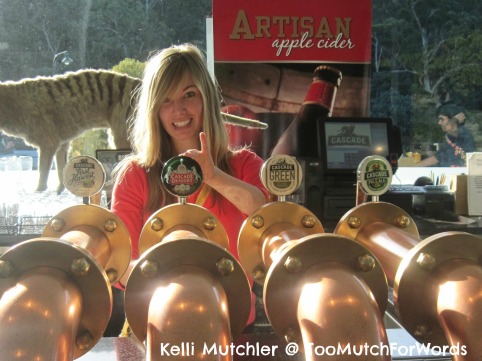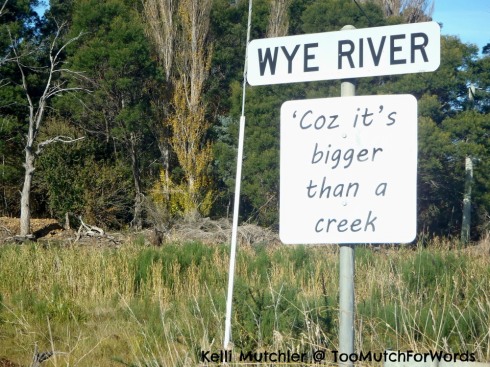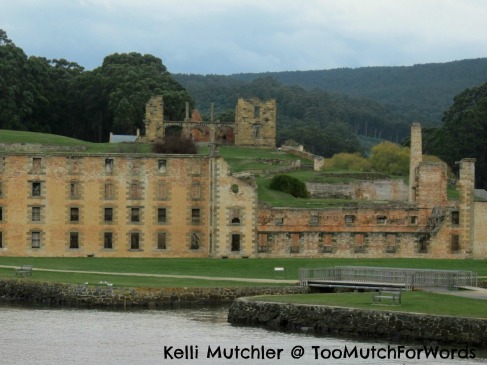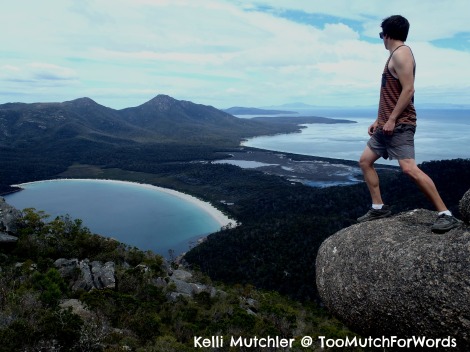Welcome to Tasmania, the place of two heads, snaggle teeth and webbed feet. An assortment of unflattering body parts that supposedly separate inbred Tasmanians from the rest of Australia. However mercilessly the Mainlanders may laugh at the island, locals shrug it off with a stoic pioneer spirit. During my six months here, I’ve realized that they’ll gladly trade a little laughter in order to keep secret the paradise that is their home.
How do you actually distinguish Tasmania from other Aussie states? The devil is, quite literally, in the details.
1. Loony Toons’ spinning maniac isn’t far from the real thing. Tasmanian Devils are noisy carnivores with sharp teeth and a ferocious jaw. Rarely seen in the wild, the Devil population has been slowly declining due to an incurable facial tumor. Make a difference by adopting a devil, or purchasing one of the many souvenirs that donate a percentage of sales to the Save The Tasmanian Devil appeal.
2. With a human population of about 512,00, it doesn’t take many visitors to make a crowd. In 2013, a record 1 million tourists explored the state – a number slightly less than Tasmania’s total population of sheep. Join the journey on the newly-created tourist highway, The Great Eastern Drive, which will rival mainland’s Great Ocean Road.

3. Regional alliances aren’t based on politics; instead, they’re shaped by beer. Southerns swear by the striped mascot of Cascade’s Tasmanian Tiger, while Northerners sip up the ales of James Boag’s. Why the dividing boundary? Cascade, Australia’s oldest beer, is brewed down in Hobart, and Boag’s is bottled in Launceston, up top. Taste a bit of local flavor with Cascade Draught or Boag’s Wizard Smith Ale, two unique beverages only available within the state.
4. The main road between the two largest cities, Launceston (or “Lonnie,” as the natives call it) and Hobart, is a one lane highway. Expect to travel it in fits and starts, as your route is slowed by road-killed wallabies, suddenly changing speed limits, nervous tourists in camper vans and neighborhood farmers chugging home in tractors.

5. Shopping can still be done at roadside folding tables. Hand-painted advertisements for cray pots, potatoes and sheep poo line the winding highways, with tin can collection jars acting as cash registers. Need used books or Tassie Devil oven mitts? For another rural shopping experience, swing past Shop in the Bush, a lonely bric-a-brac store on the outskirts of the Blue Tier Forest.
6. The hottest event of the summer will not be the 2014 Fifa World Cup, but the United Nation’s decision to uphold Tasmania’s World Heritage site. The Tasmanian Wilderness is one of the largest conservation areas in Australia, covering nearly 1/5 of the island. The federal government has petitioned the UN to reduce the size of the site in order to increase logging. Keep an eye on the news in mid-June, when a decision on the Tasmanian Wilderness will be made at the 38th World Heritage Committee session.

7. The most popular and recognizable style of architecture is Convict. While Britain’s transportation policies to the mainland ended in the 1850s , Tasmania remained a penal colony until the 1870s. The bricks and mortar of this recent history are evident around the island, especially in jail settlements like the infamous Port Arthur. Built on the edge of the Tasman Peninsula, this was a prison within a prison, a place where eternal punishment destroyed rehabilitation. Explore the grounds of Port Arthur with a sense of reverence; nearly 130 years after the final prisoner was flogged here, Australia experienced it’s biggest public massacre when a gunman opened fire and killed 35 people.
8. Thanks to a rich soil and the ban of all genetically modified crops, Tasmania is an agricultural haven. Savor salty Pacific oysters, succulent Cape Grim beef, aromatic wheels of King Island brie and crisp red apples – the fruit behind Tasmania’s nickname, “The Apple Isle.” With multiple wine, cider and microbrewery trails, it’s quickly becoming a gastronomic destination. Don’t stop at the food stuffs; try Lark, a distillery product that just won the title of “World’s Best Single Malt Whiskey.”

9. People often refer to the island as “the New Zealand of Australia” because it’s smaller, more scenic, more colloquial, and all jokes involve sheep and cousins. Much like residents of Alaska or the Isle of Man, folks relate foremost to the soil beneath their feet, and not the nearby mother country. To be Tasmanian is to protect a parcel of land so wealthy in history, wildlife and natural resources, that insulting generalizations are simply empty sentences. Look closely and you’ll see, the joke is really on those unlucky folks stuck on the mainland. ![]()

Kelli Mutchler left a small, Midwest American town to prove that Yanks can, and do, chose alternative lifestyles. On the road for five years now, Kelli has tried news reporting and waitressing, bungy jumping and English teaching. Currently working with Burmese women refugees in Thailand, she hopes to pursue a MA in Global Development. Opportunities and scenes for international travel are encouraged on her blog, www.toomutchforwords.com.








